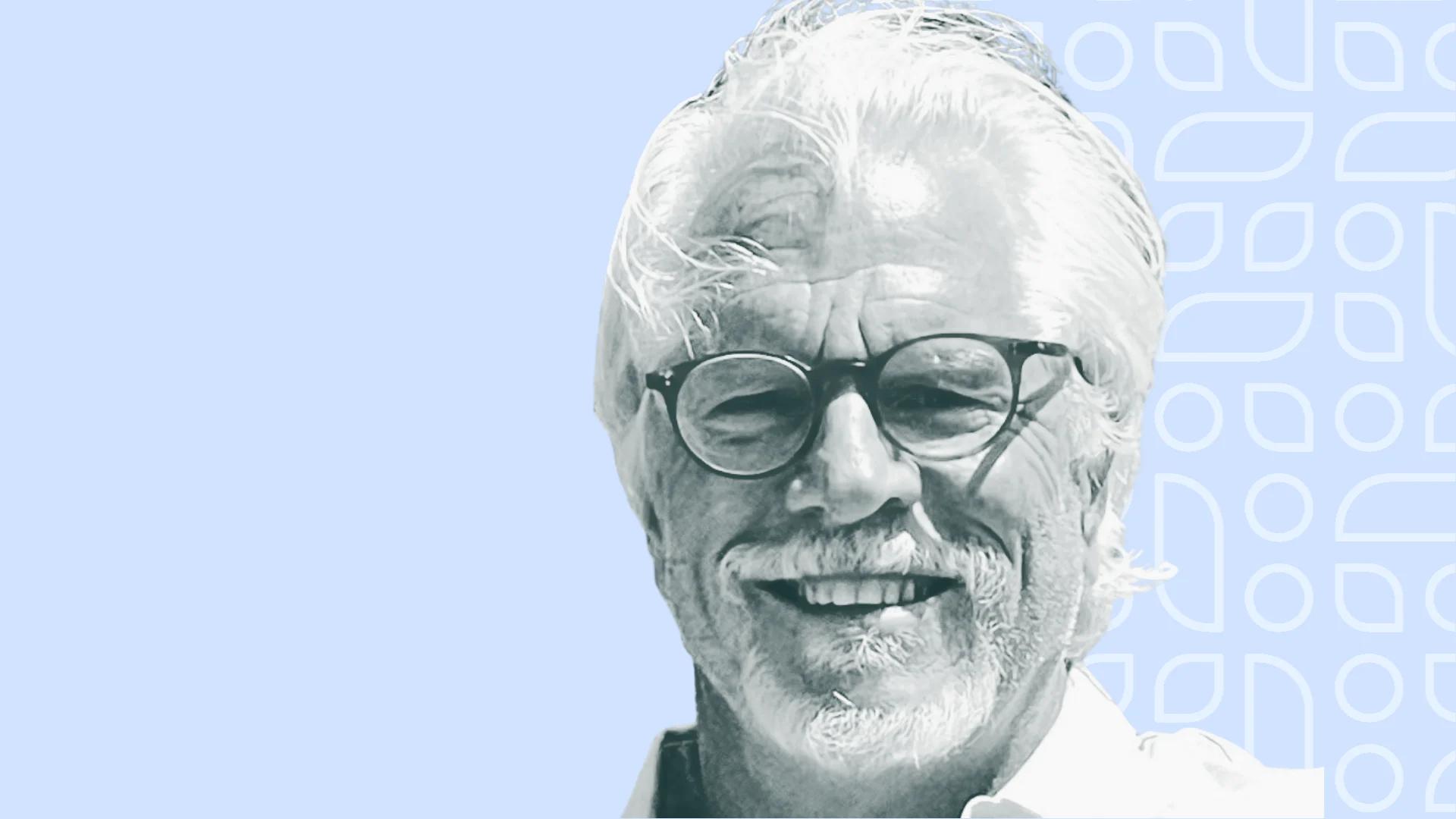Beyond the Bottle: Tom's 7+ Steps to Reclaiming Your Life from Alcohol Addiction



Caroline Beidler, MSW is an author, speaker, and the Managing Editor of Recovery.com. She writes about topics related to addiction, mental health, and trauma recovery, informed by her personal experience and professional expertise.




Caroline Beidler, MSW is an author, speaker, and the Managing Editor of Recovery.com. She writes about topics related to addiction, mental health, and trauma recovery, informed by her personal experience and professional expertise.
Table of Contents
- 1. Recognizing Your “Bottom” and Taking the First Step
- 2. Embracing a Recovery Mindset
- 3. The Power of Letting Go: Releasing Control and Asking for Help
- 4. The Path to Forgiveness: Healing Past Wounds
- 5. Simplifying Life and Finding New Purpose
- 6. Building a Support System and Maintaining Accountability
- 7. Embracing Change at Any Age: Dispelling Misconceptions
- The Call to Action: Stepping Off the Fence
For many, the idea of living without alcohol can feel like staring into a void. It can be a “best friend” that’s been by your side through thick and thin, even as it quietly erodes your life. Yet, as Tom, a man with over three and a half years of sobriety, shares, the reality of recovery is far from a void. It’s a journey toward a simpler, more authentic, and ultimately, far more fulfilling existence. Tom’s story is a powerful testament to the fact that change is possible at any age, and that even from the depths of despair, a new life can emerge.
“Before I started my recovery journey, I was in turmoil, both internally and externally,” Tom reflects, painting a picture that resonates with many struggling with addiction. Despite outward appearances of success—a loving family, a thriving career—Tom describes himself as “basically fraudulent,” caught in a painful clash between his projected image and his true state. This internal conflict eventually led to a dramatic collapse: an affair, job loss, and ultimately, losing his home. He found himself in an extended-stay hotel, staring at the ceiling, utterly lost. This was his “bottom”—a point where “my behavior was deteriorating faster than I could lower my standards.” For Tom, hitting this intolerable low was the impetus he needed to finally seek help.
1. Recognizing Your “Bottom” and Taking the First Step
The concept of a “bottom” in recovery is deeply personal and varied. It’s the point where the pain of continuing destructive behaviors outweighs the fear of change. For Tom, it was the realization that he couldn’t sink any lower. This critical moment propelled him into outpatient treatment, marking the beginning of his recovery journey. The decision to seek help, whether through a formal program, support groups, or professional therapy, is the crucial first step. It requires acknowledging the problem and developing a genuine desire for change.
2. Embracing a Recovery Mindset
Tom’s initial foray into recovery involved a 30-day outpatient program, leading to a year and a half of sobriety. While not “ideal,” it laid the groundwork. He attended meetings, worked with a sponsor, and engaged with the 12 Steps. This consistent effort helped him gradually shed a 35-40 year “substance abuse mindset” and develop a recovery mindset. This shift isn’t instantaneous; it’s a process of unlearning ingrained patterns and replacing them with healthier coping mechanisms and ways of thinking. Building this new mindset involves active participation in the recovery community and a genuine commitment to personal growth.
3. The Power of Letting Go: Releasing Control and Asking for Help
One of the most profound lessons Tom learned in recovery was the importance of letting go. “I had a hard time asking for help,” he admits, a common struggle for individuals accustomed to managing everything on their own. This resistance to vulnerability extended to his career, mental health, and particularly his alcoholism. True recovery, however, necessitates relinquishing control and allowing others to offer support.
For Tom, this meant making drastic changes, including moving into a sober living environment (SLE) because he recognized he was “incapable of living on his own” in early recovery. This highlights the crucial role of external support and accountability. He also found immense value in connecting with a community, attending AA meetings, and even participating in weekly conference calls with his siblings to discuss his journey. Isolation, Tom emphasizes, “was my downfall.” Embracing help from others is not a sign of weakness but a fundamental pillar of sustainable recovery.
4. The Path to Forgiveness: Healing Past Wounds
The second critical lesson Tom learned was forgiveness, particularly self-forgiveness. His drinking had left a trail of “wreckage”: a failed marriage, a destroyed career, strained relationships with his children, and significant financial and legal issues. Dwelling on this past self-recrimination, he realized, would only lead back to drinking or, at the very least, a miserable recovery.
“I had to forgive myself for having created this wreckage in order to move away from it,” he states. This act of self-compassion is vital. Holding onto guilt and shame can be a powerful trigger for relapse. By acknowledging past mistakes without judgment and actively working to make amends where possible, individuals can free themselves from the emotional burden of their past and focus on building a healthier future. The journey of forgiveness often involves confronting difficult emotions and seeking guidance from therapists or support groups.
5. Simplifying Life and Finding New Purpose
Life after recovery, Tom explains, is “much simpler.” He no longer pursues the high-powered career or accumulates material possessions he once believed were “vital to my happiness.” Instead, he has embraced a minimalist approach, even living in a trailer—a decision that, while not for everyone, symbolizes his commitment to downsizing and “clearing the wreckage, not just of my past, but of my present.” This means letting go of anything that doesn’t serve his recovery.
His career path has also shifted dramatically. Once in a “soul-sucking” high-paying job, he is now a personal chef, doing something he genuinely enjoys: cooking. This transition highlights the importance of finding new passions and purposes in recovery that align with a healthier lifestyle. The shift from an externally driven life to one focused on internal well-being is a hallmark of lasting sobriety.
6. Building a Support System and Maintaining Accountability
Tom’s current life is also enriched by a new marriage. His wife serves as an “accountability partner,” helping him stay “on the beam.” He also utilizes Antabuse, a medication that helps prevent alcohol consumption, which he finds incredibly helpful. While some in AA might consider it a “crutch,” Tom sees it as a practical tool that eliminates the daily internal debate about drinking. “With Antabuse, I only have to make one decision a day, and that is to get up in the morning and take that pill and that quiets the committee,” he explains.
This combination of external support (his wife), medical assistance, and continued personal commitment underscores the multi-faceted approach often necessary for long-term sobriety. Building a strong support system of trusted individuals, whether family, friends, or fellow recovery members, is paramount. This network provides encouragement, understanding, and accountability, which are vital during challenging moments.
7. Embracing Change at Any Age: Dispelling Misconceptions
At nearly 70 years old, Tom offers valuable advice for older individuals contemplating recovery. The misconception that “you’re incapable of change” at an advanced age is a significant hurdle he urges people to “jettison.” “Everyone can change,” he asserts, “it just takes a strong desire to do so.” His story is living proof that transformation is possible regardless of how long one has been struggling.
He also advises against dwelling on the past: “It is okay to look at your past, but don’t stare at it.” This echoes the importance of self-forgiveness and focusing on the present and future. For those “on the fence” about recovery, Tom’s message is simple and powerful: “Just do it. What do you have to lose?” He highlights the profound shift in societal perception, noting that recovery has become “a badge of honor.” The shame and fear often associated with addiction are slowly being replaced by pride in overcoming adversity.
The alternative to recovery, as Tom starkly puts it, is a life of dissatisfaction and physical discomfort: “When you get up in the morning and your head is pounding and your mouth is dry, and your knees are shaky, you look at yourself in the mirror and… you can’t believe that it is a good life. Clearly, you’re dissatisfied.”
The Call to Action: Stepping Off the Fence
Tom’s journey offers profound insights into the reality of long-term recovery. It’s not about finding a magical cure but about making a conscious decision to change, seeking help, embracing forgiveness, building a supportive community, and simplifying life to align with healthier values. For anyone grappling with addiction, his story is an invitation to “get off the fence and join the party,” or perhaps more accurately, “leave the party” that has been holding you captive. The freedom and contentment Tom has found are within reach for anyone willing to take that crucial first step. If you or a loved one are struggling with alcohol addiction, resources are available to help. Consider exploring Recovery.com’s addiction resources.
Our Promise
How Is Recovery.com Different?
We believe everyone deserves access to accurate, unbiased information about mental health and recovery. That’s why we have a comprehensive set of treatment providers and don't charge for inclusion. Any center that meets our criteria can list for free. We do not and have never accepted fees for referring someone to a particular center. Providers who advertise with us must be verified by our Research Team and we clearly mark their status as advertisers.
Our goal is to help you choose the best path for your recovery. That begins with information you can trust.





